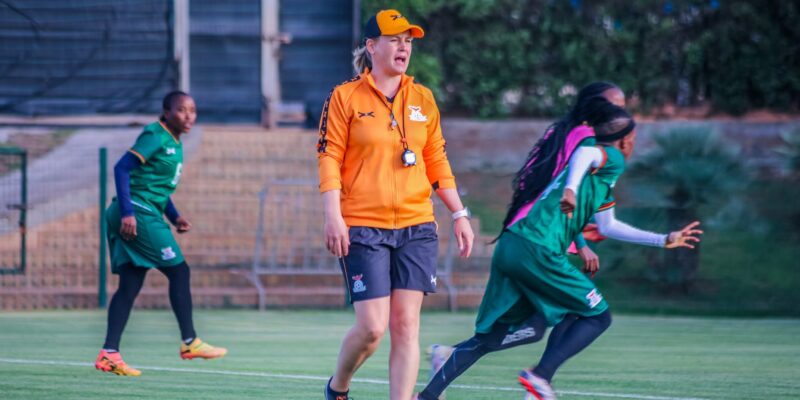How An AI Robot Helped Silent Kids Speak

How A Robot Helped Silent Kids Speak
Nord Anglia EducationFor obvious reasons, current educational technology is focussed on AI tutors and platforms that promise personalized learning. But even with all that innovation, giving meaningful, scalable support to neurodiverse students is one area that remains challenging to crack.
Students with additional learning needs (ALN) don’t fit neatly into the box that most tech is built for. Their needs are complex, personal and often shift depending on the day or the environment. That’s why a new pilot by Nord Anglia Education is so interesting. It shows that support for these students might come in the form of an empathetic and interactive socially assistive robot.
I have written about Nord Anglia’s innovative practice before, but this time we are exploring a project called Robots for Inclusion and it’s moved well past the idea stage. In two of its international schools, Nord Anglia introduced a robot named Misty II to work with ALN students. The results were impressive. Not only did students become more engaged and emotionally balanced during sessions with Misty, but the benefits also carried over into regular classrooms and home life.
The pilot was a collaboration between Nord Anglia’s Digital Lab and Educate Ventures Research. Everything about the study, from how Misty was used to how success was measured, was built on a solid academic foundation. As Harry Cunningham, Nord Anglia’s Digital Innovations Lead, explained to me:
“Our Misty pilot and other projects are great examples of what happens when educator-designed practice meets purposeful innovation with the most important goal in mind: to create better learning outcomes for children.”
The research will be published next month, but in an advanced report shared with me, the robot was tested at Compass International School Doha and St. Andrews International School Bangkok. A group of 11 students, from Year 2 through Year 6, participated. They had a range of learning profiles, including autism and dyslexia. Each session was led by an ALN specialist who made sure Misty was being used to support existing teaching methods.
Instead of simply asking students if they “liked” the robot, trained observers used a structured process to watch how students behaved. They looked at things like emotional regulation and communication. Teachers also kept diaries, filled out surveys before and after the sessions, and participated in focus groups. All of that gave the researchers a deep and layered understanding of what was actually happening.
Importantly, the robot wasn’t just dropped into the room to entertain. The sessions were designed using the TPACK model (that’s Technological, Pedagogical, and Content Knowledge), which means the tech was built right into the learning goals and teaching strategies. Every lesson was tailored to fit the student.
One of the biggest challenges for ALN students is emotional regulation. This enables them to be in a mindset that allows them to focus and learn. The report that was shared with me stated that the study used a color system to track this. Green meant a student was calm and ready to learn. Before Misty was introduced, only 11% of the students stayed in the green zone for a whole session. With Misty, that number jumped all the way to 83%.
Some students who usually had trouble staying on task suddenly found a rhythm. For others, especially those with autism or dyslexia, Misty offered a kind of calm and predictability that made it easier to engage. A few students who rarely spoke started to interact. Sometimes for the very first time.
Engagement levels were measured too, using a five-point scale. Before Misty, students scored around 3.5 for attention and 2 for gaze (meaning eye contact or looking at the task). During sessions with Misty, those numbers went up to 4 and 3.5. Teachers noticed they followed instructions more easily and even started expressing their emotions more openly.
What really made this pilot stand out was the carryover effect. The students didn’t just do better when Misty was in the room, but they started doing better everywhere. Teachers and parents both said they saw improved focus and task completion during regular class time and even at home. That suggests students were learning strategies they could take with them.
All the teachers involved agreed that Misty made a real difference in their classrooms. It actually made their jobs easier, not harder. They came up with new ways to teach based on Misty’s features and continued using her after the pilot officially ended.
The ripple effects went even further. The project sparked new conversations between different departments in the schools and even encouraged some students to get involved in their own tech-based ideas. It became a source of ongoing collaboration and creativity.
With results like these, it’s no surprise that Nord Anglia is planning to expand. More Misty robots will be brought into the original pilot schools, and other schools in the global network are getting ready to try it out too.
At the same time, there’s some exciting work happening at the intersection of robotics and AI. At St. Andrews in Bangkok, students are already experimenting with ways to connect Misty to ChatGPT. They’re aiming to create more flexible, responsive learning tools. This is something that could take this whole concept to a new level and give Misty new capabilities to assist students.
Looking further ahead, Nord Anglia’s Digital Lab is exploring how this technology could support student wellbeing more broadly. There’s even talk of letting older students create lesson content for Misty, essentially teaching them to design inclusive learning experiences from the ground up. That’s the kind of hands-on, empathetic learning that could shape how they see the world and each other.
So far, the work of Nord Anglia’s Digital Lab is about using thoughtful, well-designed tech to amplify the work of real educators and help students who are often left behind. It seems from the research that tech like this doesn’t necessarily have to disconnect people, but it can bring them closer together.







_1751880097.jpeg)




